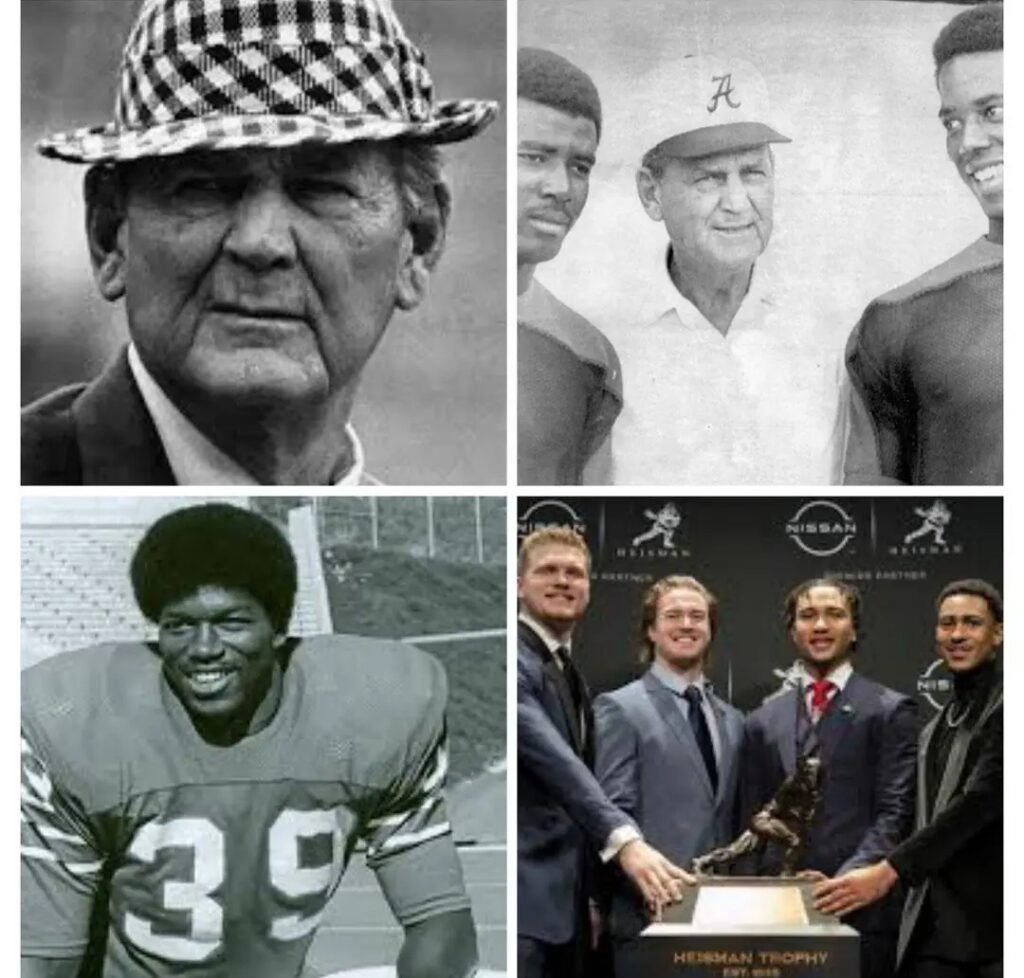The Dark Side of the Crimson Tide: When Glory Stood on the Wrong Side of History
For decades, the University of Alabama’s football dominance has been nearly mythological—defined by dynastic reigns, Heisman heroes, and a legacy carved into the very fabric of American sports. But woven deep into that crimson fabric is a thread of resistance, defiance, and racial injustice—a part of Alabama’s football story that isn’t celebrated in documentaries or etched into stadium walls. It’s the story of how the Crimson Tide, in the heart of the Jim Crow South, became a symbol not only of athletic superiority, but of the entrenched resistance to integration.
In the 1950s and 60s, as civil rights protests shook the nation and schools across the country slowly opened their doors to Black athletes, Alabama football stood defiantly in the shadow of change. Legendary coach Paul “Bear” Bryant is often lionized as a tactical genius and cultural icon, but less discussed is how his success flourished within an all-white program, long after other schools had started to integrate. While northern teams like Michigan State, and even southern programs like Kentucky, began recruiting Black athletes, Alabama remained stubbornly homogenous—reflecting the racial politics of a state where Governor George Wallace declared, “Segregation now, segregation tomorrow, segregation forever.”
Bryant apologists argue he was a quiet reformer, waiting for the “right time” to integrate the team, hindered by a hostile administration and racist boosters. But history is more complex. Bryant wielded immense power in Tuscaloosa. His word shaped university policy and statewide pride. Yet, for years, he chose to win with an all-white squad, even as Black athletes like Wilbur Jackson were forced to wait on the sidelines of history. Was Bryant a passive prisoner of his time—or a coach who prioritized championships over conscience?
In 1970, the reckoning came—not from Montgomery or Washington, but from Los Angeles. That year, Alabama scheduled a game against the fully integrated USC Trojans, led by a Black running back named Sam “Bam” Cunningham. The game, played in Birmingham, was a slaughter. USC ran over, around, and through Alabama’s defense. Cunningham scored two touchdowns, rushing for 135 yards. It wasn’t just a defeat—it was an awakening. Legend has it that Cunningham did more to integrate Alabama in 60 minutes than years of protest ever could.
The Tide would integrate shortly after, and Bryant would coach Black players like Ozzie Newsome, a future Hall of Famer. But the memory lingers—of a program that clung to white supremacy until its hand was forced, of empty seats where Black heroes might have stood sooner. Today, as Alabama continues to dominate the modern game with a diverse roster, the past still whispers from the stands of Bryant–Denny Stadium.
History is not erased by victory. Glory earned on the wrong side of justice comes at a cost. And while the Tide has long since rolled into a new era, the stains of its resistance to progress remain beneath the surface—hidden, perhaps, but never gone.

